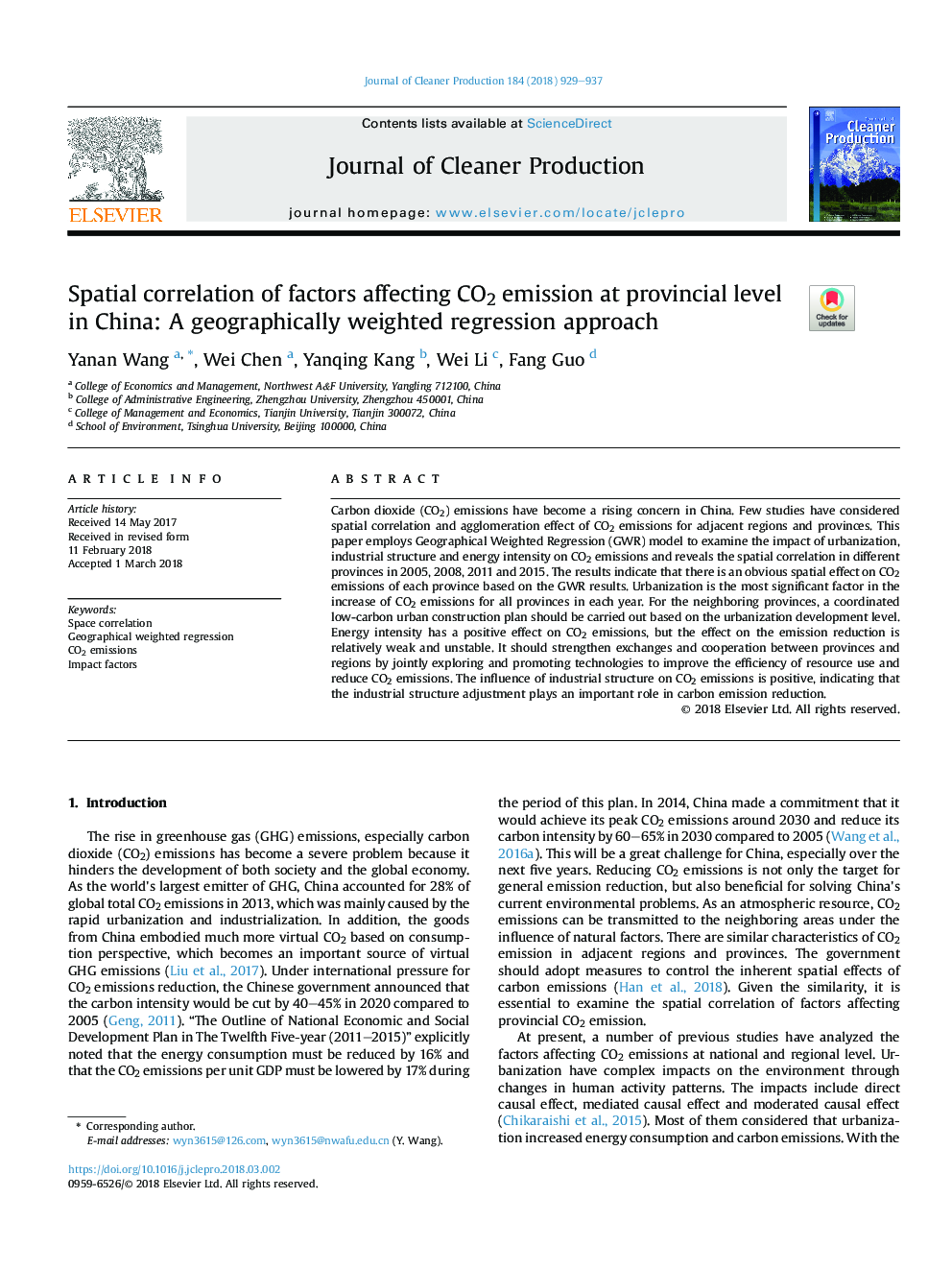| Article ID | Journal | Published Year | Pages | File Type |
|---|---|---|---|---|
| 8096873 | Journal of Cleaner Production | 2018 | 9 Pages |
Abstract
Carbon dioxide (CO2) emissions have become a rising concern in China. Few studies have considered spatial correlation and agglomeration effect of CO2 emissions for adjacent regions and provinces. This paper employs Geographical Weighted Regression (GWR) model to examine the impact of urbanization, industrial structure and energy intensity on CO2 emissions and reveals the spatial correlation in different provinces in 2005, 2008, 2011 and 2015. The results indicate that there is an obvious spatial effect on CO2 emissions of each province based on the GWR results. Urbanization is the most significant factor in the increase of CO2 emissions for all provinces in each year. For the neighboring provinces, a coordinated low-carbon urban construction plan should be carried out based on the urbanization development level. Energy intensity has a positive effect on CO2 emissions, but the effect on the emission reduction is relatively weak and unstable. It should strengthen exchanges and cooperation between provinces and regions by jointly exploring and promoting technologies to improve the efficiency of resource use and reduce CO2 emissions. The influence of industrial structure on CO2 emissions is positive, indicating that the industrial structure adjustment plays an important role in carbon emission reduction.
Related Topics
Physical Sciences and Engineering
Energy
Renewable Energy, Sustainability and the Environment
Authors
Yanan Wang, Wei Chen, Yanqing Kang, Wei Li, Fang Guo,
